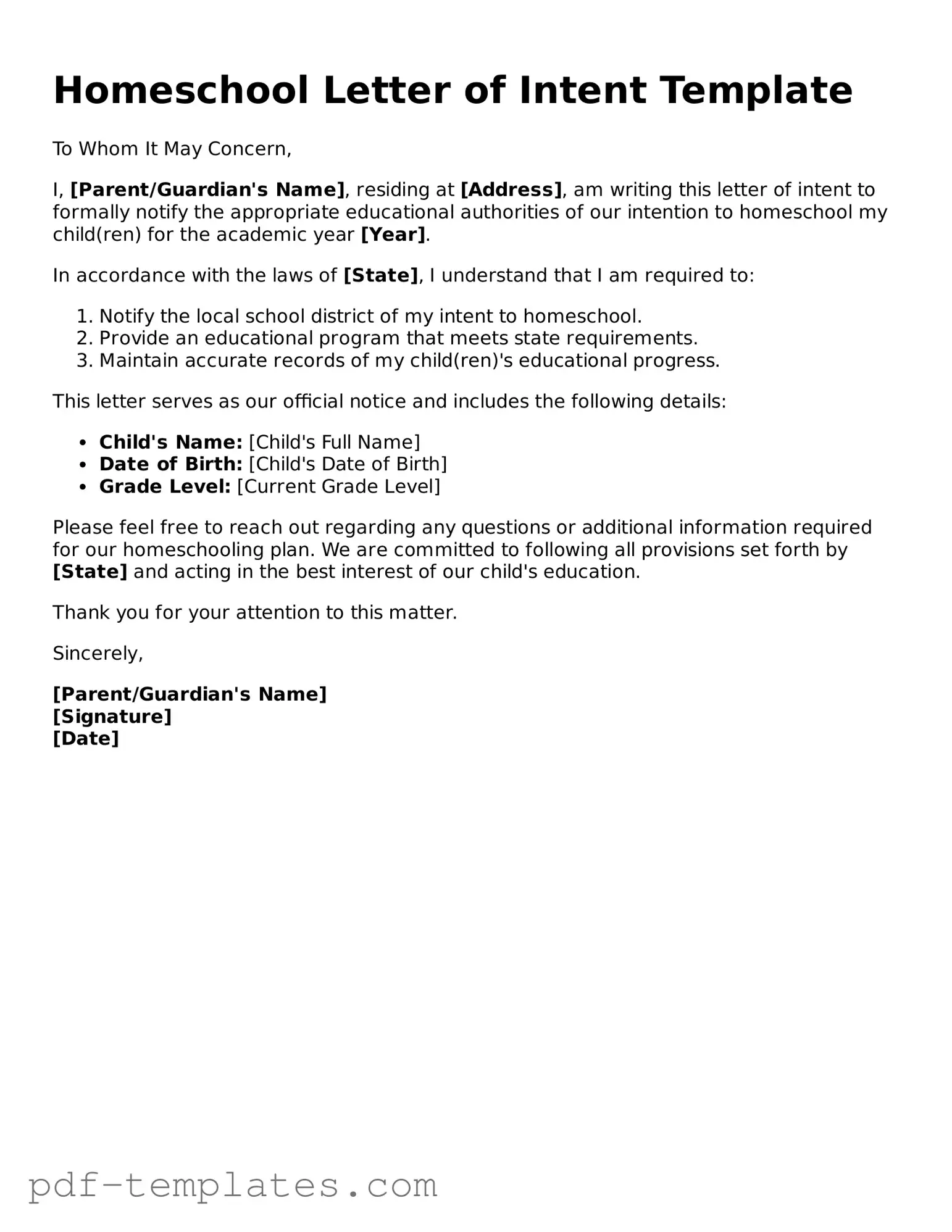The Affidavit of Intent to Homeschool is quite similar to the Homeschool Letter of Intent. Both documents serve as a formal declaration that a parent or guardian intends to educate their child at home. The Affidavit often requires notarization, adding a layer of legal formality. This document may also include specific information about the child, such as their age and educational background, which can help to clarify the parent's intentions to the school district.
The Notice of Intent to Homeschool is another document that shares similarities with the Homeschool Letter of Intent. Like the letter, this notice is submitted to the local school district to inform them of the parent’s decision to homeschool. It typically includes details about the educational plan and the curriculum to be used. The Notice of Intent may also specify the length of the homeschooling period, ensuring that the school district is aware of the timeframe for which the child will be homeschooled.
The Individualized Education Program (IEP) can also be compared to the Homeschool Letter of Intent. While the IEP is specifically designed for children with special needs, it outlines the educational goals and services that will be provided. Parents who choose to homeschool a child with an IEP may need to incorporate these goals into their homeschooling plan, ensuring that the child's educational needs are met while they learn at home.
The Curriculum Plan is another document that bears similarity to the Homeschool Letter of Intent. This plan outlines the subjects and materials that will be used for homeschooling. While the Letter of Intent serves as a notice of intent, the Curriculum Plan details the actual educational approach. Parents often submit this plan to demonstrate that they have a structured approach to their child’s education.
The Attendance Record is also relevant in this context. While the Homeschool Letter of Intent announces the intention to homeschool, the Attendance Record tracks the days and hours of instruction provided. This document is important for compliance with state regulations, as it shows that the child is receiving a consistent education at home.
In the realm of formal communications, the importance of a well-structured letter cannot be overstated, much like the necessity for a cease and desist letter form which serves as a crucial instrument in addressing grievances effectively. For those looking to draft such a letter, resources like All Florida Forms provide necessary templates to facilitate this process, ensuring that individuals can present their cases clearly and comprehensively.
The Progress Report is similar as well, as it documents the child's educational achievements over time. While the Homeschool Letter of Intent indicates the start of homeschooling, the Progress Report shows how well the child is doing in their studies. This document can be shared with the school district to demonstrate that the homeschooling is effective and that the child is meeting educational milestones.
The Educational Portfolio is another document that aligns with the Homeschool Letter of Intent. This portfolio is a collection of the child's work, assessments, and projects completed during the homeschooling period. It serves as evidence of learning and progress, complementing the Letter of Intent by showcasing the educational journey undertaken by the child at home.
Lastly, the Homeschooling Evaluation Report is akin to the Homeschool Letter of Intent. This report is typically completed at the end of the homeschooling year and assesses the child’s academic progress. While the Letter of Intent signifies the beginning of homeschooling, the Evaluation Report provides a summary of what has been accomplished, ensuring that the educational objectives have been met throughout the year.
